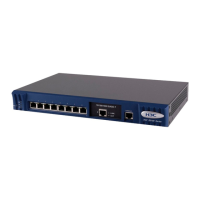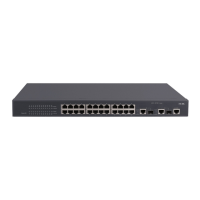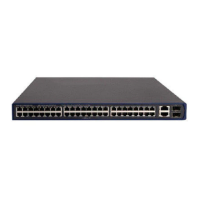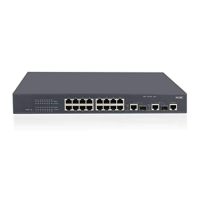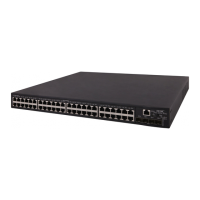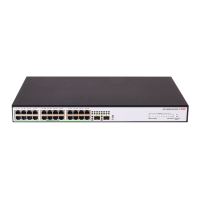1-19
System View: return to User View with Ctrl+Z.
[Sysname] dot1x supp-proxy-check logoff
[Sysname] dot1x supp-proxy-check logoff interface Ethernet 1/0/1 to Ethernet 1/0/8
# Configure the switch to send Trap packets if the users connected to Ethernet1/0/9 port is detected
logging in through proxies.
[Sysname] dot1x supp-proxy-check trap
[Sysname] dot1x supp-proxy-check trap interface Ethernet 1/0/9
dot1x timer
Syntax
dot1x timer { handshake-period handshake-period-value | quiet-period quiet-period-value |
server-timeout server-timeout-value | supp-timeout supp-timeout-value | tx-period tx-period-value |
ver-period ver-period-value }
undo dot1x timer { handshake-period | quiet-period | server-timeout | supp-timeout | tx-period |
ver-period }
View
System view
Parameter
handshake-period handshake-period-value: Sets the handshake timer. This timer sets the
handshake-period and is triggered after a supplicant system passes the authentication. It sets the
interval for a switch to send handshake request packets to online users. If you set the number of retries
to N by using the dot1x retry command, an online user is considered offline when the switch does not
receive response packets from it in a period N times of the handshake-period.
The handshake-period-value argument ranges from 5 to 1,024 (in seconds). By default, the handshake
timer is set to 15 seconds.
quiet-period quiet-period-value: Sets the quiet-period timer. This timer sets the quiet-period. When a
supplicant system fails to pass the authentication, the switch quiets for the set period (set by the
quiet-period timer) before it processes another authentication request re-initiated by the supplicant
system. During this quiet period, the switch does not perform any 802.1x authentication-related actions
for the supplicant system.
The quiet-period-value argument ranges from 10 to 120 (in seconds). By default, the quiet-period timer
is set to 60 seconds.
server-timeout server-timeout-value: Sets the RADIUS server timer. This timer sets the server-timeout
period. After sending an authentication request packet to the RADIUS server, a switch sends another
authentication request packet if it does not receive the response from the RADIUS server when this
timer times out.
The server-timeout-value argument ranges from 100 to 300 (in seconds). By default, the RADIUS
server timer is set to 100 seconds.
supp-timeout supp-timeout-value: Sets the supplicant system timer. This timer sets the supp-timeout
period and is triggered by the switch after the switch sends a request/challenge packet to a supplicant
system (The packet is used to request the supplicant system for the MD5 encrypted string.) The switch
